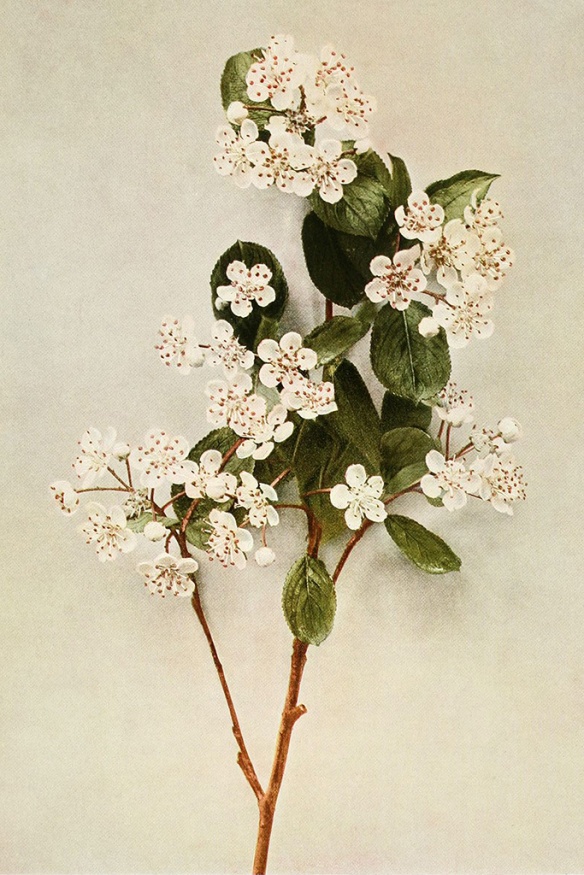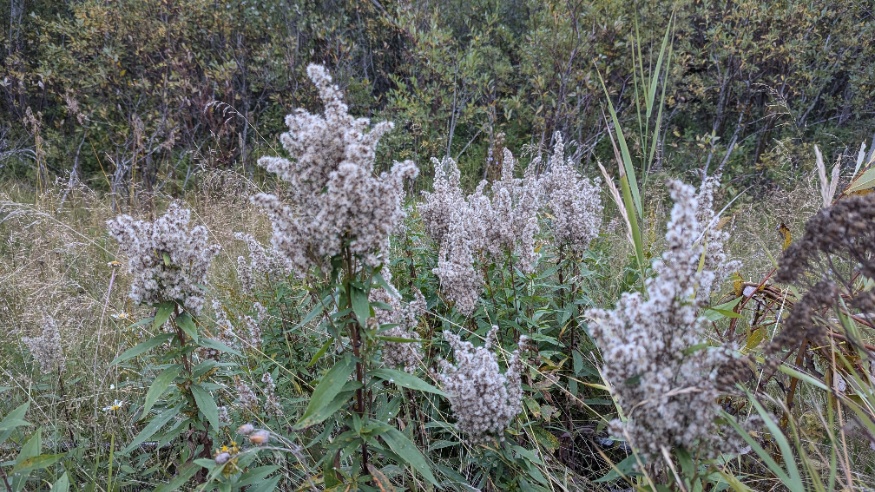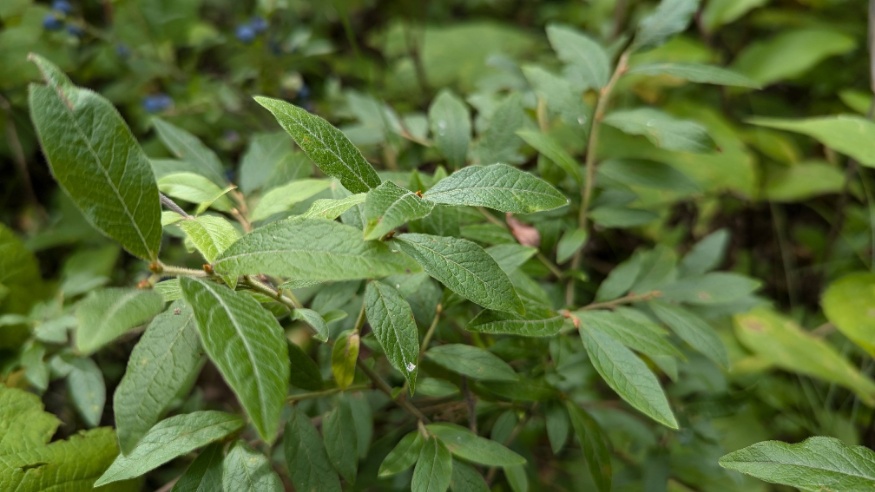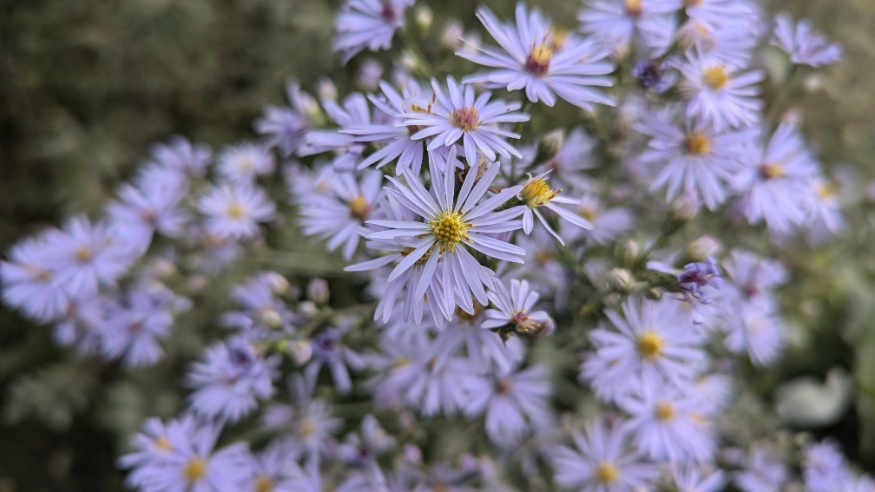Black Chokeberry
-344.jpg)
Family: Rosaceae Native to: Eastern North America
Hardy to zone: 3
Eco benefits: attracts birds, edible fruit, pest/disease resistance
Natural habitat: swamps & bogs, waters edge, hillsides & uplands
Shapes: round, multi-stemmed, clump, upright
Height: 3-6ft
width: 3-6ft
Unique attractions: flowers, fruit
Tolerances: salt, soil compaction
Common uses: hedge, naturalized plantings, rain garden
Diseases: twig blight, leaf spot
Light: full sun, partial shade
Soil: moist and fertile, well drained, acid ph, wet
Black chokeberry is an upright, open, round, and spreading shrub native to eastern North America. It can be found in swamps, bogs, thickets, and sometimes on uplands. It has a suckering colonial growth habit; adaptable to a variety of soil types, but prefers moist to wet soil on the acidic side. The fruits have use both to humans and wildlife. Both flowering and fruiting have proven their appeal in the landscaping industry.

In May, clusters of showy 5-petaled blooms appear which are pollinated mainly by bees. The best flowering and fruit production occurs when planted in full sun. In August, clusters of showy black blueberry sized fruit (pomes) follow flowering. Each fruit contains 1 to 5 seeds. The leaves are glossy and elliptic to obovate; dark green in colour and with finely toothed margins. The fall colour is a nice reddish purple. Branches become a bit leggy towards the bottom of the shrub and bark is smooth with conspicuous lenticels as seen with other cherries.
Chokeberry provides food for wildlife and humans in various ways. Fruit can persist into the winter and is eaten by birds and various animal species. The twigs and leaves are also browsed by deer and rabbits. The name chokeberry refers to a tart and bitter taste of the berries despite the fact they're edible. Better suited cooked, the fruit is sometimes used to make jams and jellies, juice and wine. Higher levels of antioxidants than any other temperate fruit has made chokeberry more popular for production in recent years and is grown commercially in Europe for various juices and beverages.
Chokeberry can be used in landscapes as a mixed border, massing, hedge or by water in wetland reclamation projects due to its tolerance of wet feet. Cultivars have been developed to reduce suckering, produce abundant fruits/flowers, and enhance fall colour. Popular cultivars include:
- ‘Autumn Magic’
- Iroquois Beauty™
- ‘Viking’
- var. elata
References
Missouri Botanical Garden. (n.d.). Aronia melanocarpa. Retrieved from https://www.missouribotanicalgarden.org/PlantFinder/PlantFinderDetails.aspx?kempercode=j420
The Morton Arboretum. (n.d.). Black chokeberry. Retrieve from https://www.mortonarb.org/trees-plants/tree-plant-descriptions/black-chokeberry
The University of Minnesota Extension. (2018). Black chokeberry. Retrieved from https://extension.umn.edu/trees-and-shrubs/black-chokeberry
The University of Maine Cooperative Extension. Plant Description and Habitat of Aronia (black chokeberry). Retrieved from https://extension.umaine.edu/agriculture/aronia/plant-description-and-habitat/


